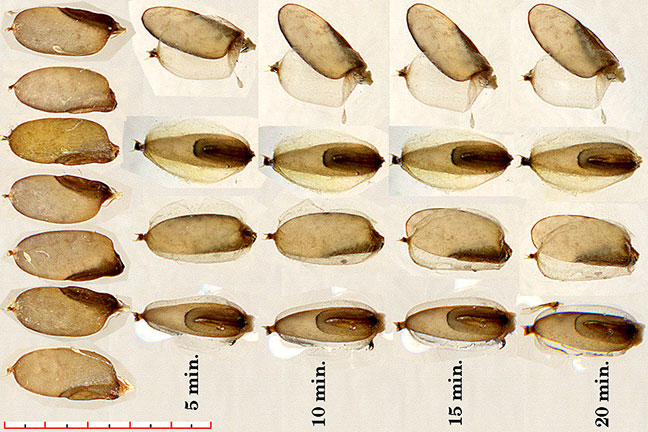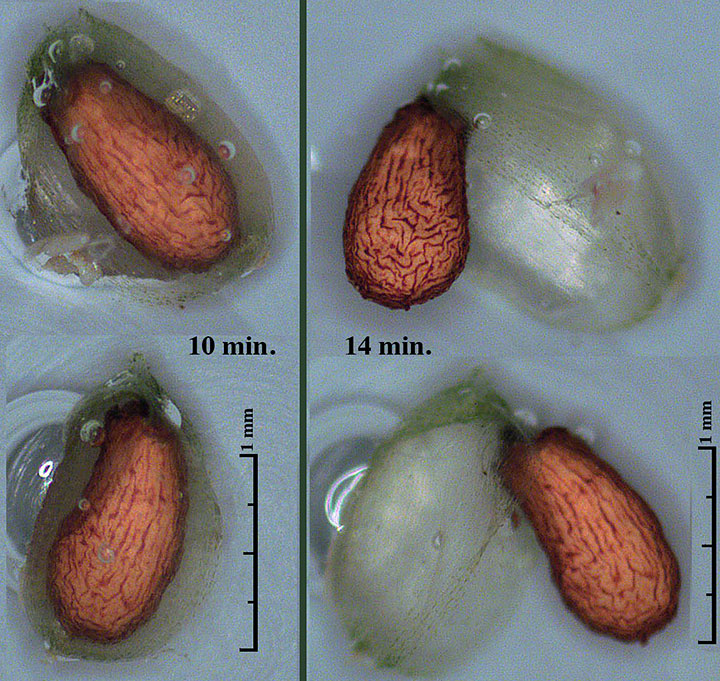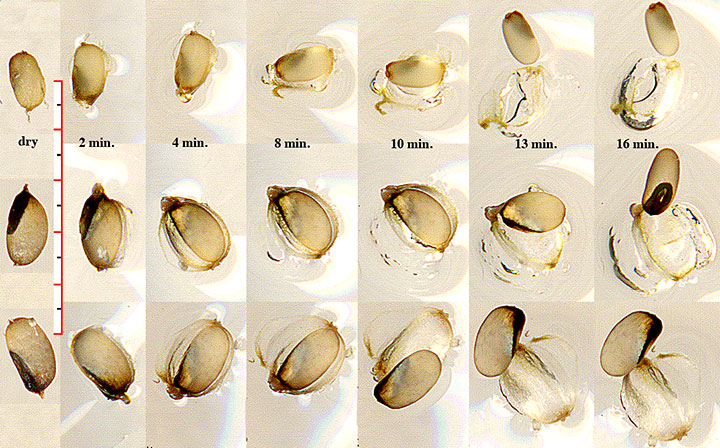
With Sprobolus, unlike most grasses, the grain's seed coat is not fused with the pericarp, and when wet the pericarp (1) may become gelatinous and (2) separate from the seed (as shown above). L. Watson and M. J. Dallwitz, The grass genera of the world, give the following description for the genus:
Pericarp free (commonly swelling and mucilaginous when wet, forcibly ejecting the seed).
Keys for the Sprobolus compositus complex commonly have used the reaction of the pericarp when moist or wet as a differentia:
Diggs et al. 1999 (Illustrated Flora of North Central Texas, p. 1326) substituted ‘wet’ for ‘moist;’ and because S. compositus var. macer is elsewhere in their key, they don't specify how its pericarp reacts:
I agree that ‘moist’ is not a clear concept if one were to go about testing the grain to see what happens. But ‘gelatinous’ vs. ‘loose’ is not binary, or easily tested.
This Diggs et al. 2006 revision (Illustrated Flora of East Texas, p. 1071) is somewhat better. At least it's binary, and now the pericarp of var. macer is covered.
Peterson et al. 2003 (Flora of North America, Vol. 25, pp. 116-117) treat the complex in two sections of their key:
Considering the difficulty determining the lemma vestiture, the only other unambiguous differentia for the Sporobolus compositus complex, why do collections from this group only rarely indicate any attempt to use wet pericarp behavior when identifying vouchers? Or even provide grains in a packet for testing? My suspicion has been that field identification was sometimes based on the name ‘tall’ dropseed = S. asper/compositus, and habit alone was considered sufficient. Virtually all plant lists for Travis County list S. compositus var. compositus. TEX/LL has 12 vouchered collections for the county that were identified by the collector as S. asper/compositius. I have examined these and found no clear specimen of S. compositus var. compositus. R. Riggins, whose work is the standard reference for the complex, examined 8 of these and she too found no S. compositus var. compositus in Travis County; S. Hatch examined the same 8 and determined only 1 to be S. compositus var. compositus (i.e., Tharp & Brown 3474; determined by Riggins and R. McGregor to be S. clandestinus, with which I agree based on its immature lemma vestiture).
Wet pericarp testing is most reliable with fresh mature grains. In 2002—2003 I tested many of my own collections of S. compositus var. drummondii, placing the grains in rainwater. Without agitation the pericarp generally began to separate and expand after 2 minutes, and continued to expand with complete separation by 10 minutes. Grains from that period were again wet tested in 2013, and although separation still occurred, it took longer, often 30—40 minutes, as in the image at the top. S. clandestinus grains collected and tested in 2002 never separated, and one group left to soak for several days began to germinate:
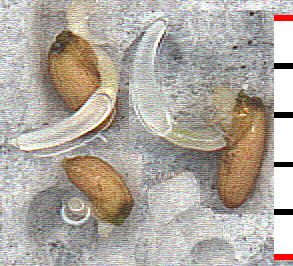 | 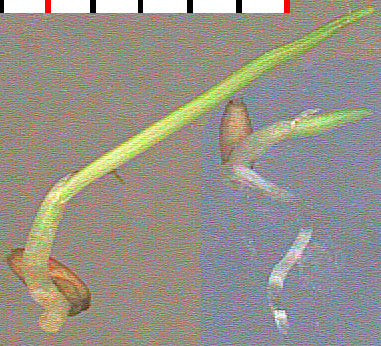 |
|---|---|
| S. clandestinus grains germinating after 3 days | the same grains after 6 days |
With older herbarium collections the wet test is less reliable. Tests made in 2002 with well established S. compositus var. drummondii indicated that the pericarp failed to separate after ca. 35 years (e.g., D. S. Correll & H. B. Correll 26648, 1962).
A not fresh but recent collection (Carr 199961, Colorado Co.). The lemma vestiture was not easily determined, but the separating pericarp clinched the ID.
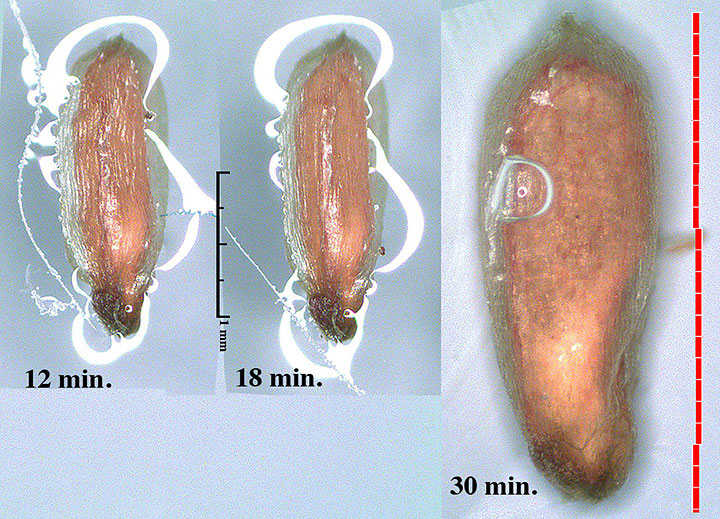
An older grain took longer and never completely separated (Hatch , Lampasas Co., 1990).
